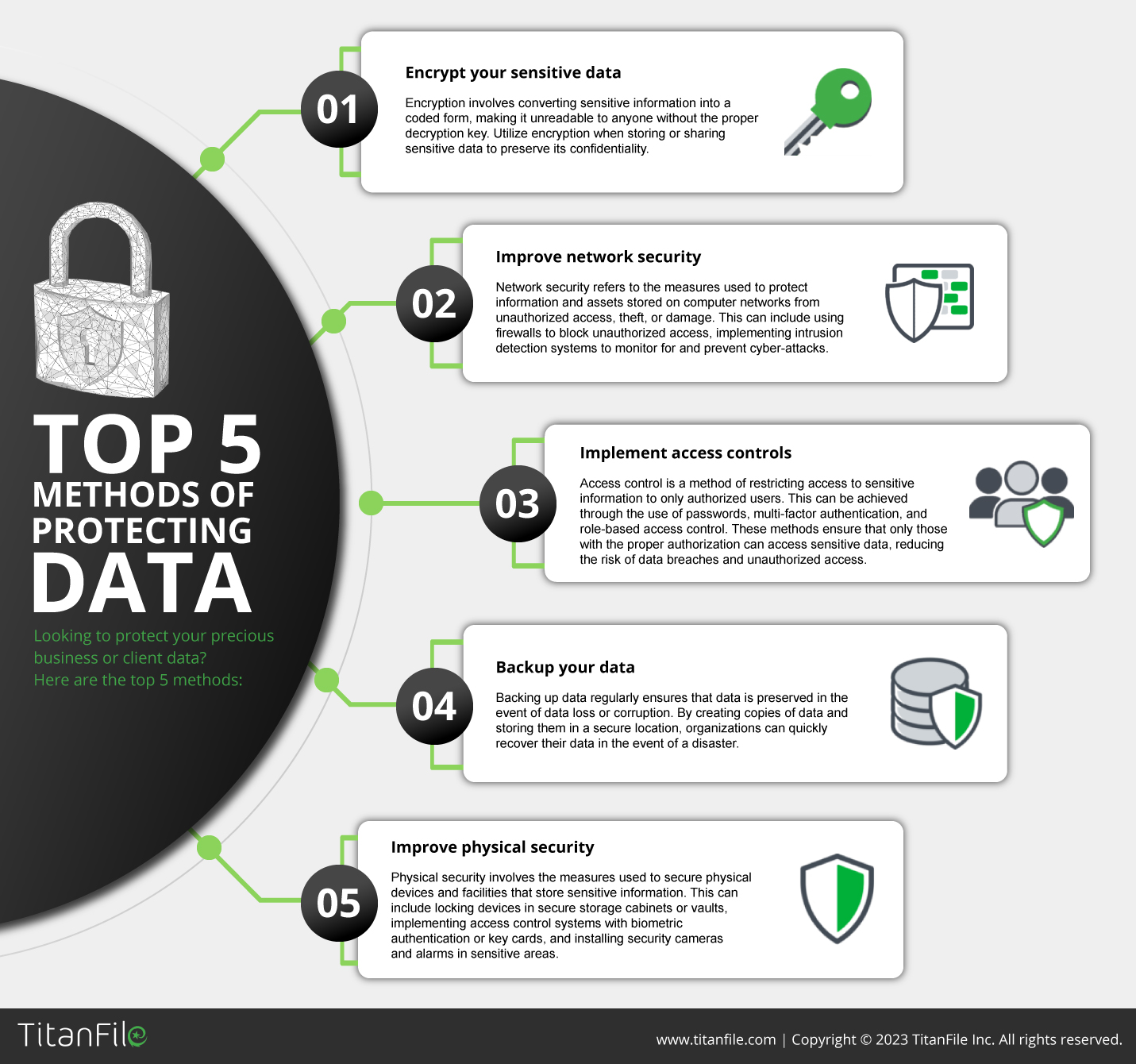Transferred Information: Protecting Your Data During Transfers

Table of Contents
Understanding the Risks of Insecure Data Transfers
Insecure data transfers expose your organization to a multitude of cyber threats, leading to significant data loss and potential legal repercussions. Let's examine the vulnerabilities and their potentially devastating consequences.
Types of Data Transfer Vulnerabilities:
Data transfer vulnerabilities expose sensitive information to malicious actors. Common threats include:
- Man-in-the-middle (MITM) attacks: Attackers intercept communication between two parties, gaining access to transferred information without either party's knowledge.
- Data interception: Unauthorized access to data during transmission through various means, such as sniffing network traffic or exploiting weak security protocols.
- Unauthorized access: Gaining access to data storage or transfer systems due to weak passwords, insufficient access controls, or exploited vulnerabilities.
These vulnerabilities can lead to various data breaches, resulting in the loss of confidential client data, intellectual property, and sensitive financial information. Ignoring these risks can lead to significant financial penalties and reputational harm.
The Consequences of Data Breaches:
The consequences of data breaches related to insecurely transferred information can be far-reaching and devastating:
- Financial penalties: Fines from regulatory bodies like the GDPR (General Data Protection Regulation) or CCPA (California Consumer Privacy Act) can be substantial.
- Legal repercussions: Lawsuits from affected individuals or organizations can lead to protracted and expensive legal battles.
- Reputational damage: Loss of customer trust and brand damage can severely impact your business's long-term viability.
Protecting transferred information is not just a technical issue; it's a critical aspect of risk management and legal compliance.
Best Practices for Secure Data Transfer
Implementing robust security measures is paramount to protecting transferred information. Here are some best practices:
Encryption Methods for Protecting Transferred Information:
Encryption is a fundamental aspect of securing data during transfer. Common methods include:
- TLS/SSL (Transport Layer Security/Secure Sockets Layer): A widely used protocol that encrypts communication between a web server and a client, ensuring secure data transfer over the internet.
- End-to-end encryption: Data is encrypted on the sender's device and only decrypted on the recipient's device, protecting it from interception even if intermediary systems are compromised.
Choosing the appropriate encryption method depends on the sensitivity of the data and the specific context of the transfer. Consider the strengths and weaknesses of each method carefully.
Secure File Transfer Protocols (SFTP):
SFTP (Secure File Transfer Protocol) provides a secure alternative to the insecure FTP (File Transfer Protocol). SFTP leverages SSH (Secure Shell) for encryption, ensuring confidential and reliable file transfers. Using SFTP is a crucial step towards protecting transferred information, especially when dealing with sensitive files.
Utilizing Virtual Private Networks (VPNs):
VPNs create a secure, encrypted connection over a public network, providing a secure tunnel for data transfer. Using a VPN enhances security, especially for remote access and protecting sensitive data while transferring it across public Wi-Fi networks.
Access Control and Authentication:
Restricting access to transferred information is crucial. Strong measures include:
- Strong passwords: Implementing and enforcing strong password policies, including complexity requirements and regular changes.
- Multi-factor authentication (MFA): Requiring multiple forms of authentication, such as passwords, one-time codes, or biometric verification, significantly enhances security.
- Access control lists (ACLs): Carefully managing user permissions to ensure that only authorized personnel can access transferred information.
These security measures contribute significantly to preventing unauthorized access to sensitive data.
Choosing the Right Data Transfer Solution
Selecting the appropriate data transfer method is crucial for maintaining data security.
Evaluating Different Data Transfer Methods:
Consider various methods and their security implications:
- Cloud storage: Offers scalability and accessibility but requires careful vendor selection to ensure adequate security measures.
- Email attachments: Inconvenient for large files and inherently less secure than dedicated file transfer solutions.
- Dedicated file transfer solutions: Offer robust security features, encryption, and audit trails, making them ideal for sensitive data transfers.
The choice depends on the sensitivity of the data, volume of transfers, and your organization's specific security requirements.
Vendor Due Diligence:
When choosing cloud storage or other third-party solutions, perform thorough vendor due diligence:
- Security certifications: Verify that the vendor holds relevant security certifications, such as ISO 27001 or SOC 2.
- Compliance standards: Ensure the vendor complies with relevant regulations, like GDPR or HIPAA.
- Reputation and track record: Research the vendor's reputation and track record regarding data security and privacy.
Choosing a reputable provider with a strong security posture is vital for protecting your transferred information.
Conclusion
Protecting transferred information is paramount for maintaining data security and avoiding the potentially devastating consequences of data breaches. Implementing robust security measures, such as encryption, secure file transfer protocols, VPNs, and strong access controls, is crucial. Carefully evaluating different data transfer methods and performing thorough vendor due diligence when selecting third-party solutions are equally important. Secure your data transfers today. Implement the best practices outlined in this article and take control of your data security. Download our free checklist for securing your data transfers [link to checklist]. Protect your transferred information and mitigate the risks associated with insecure data transmission.

Featured Posts
-
 Xrp Etf Approval Could Unleash 800 Million In Week 1 Inflows
May 08, 2025
Xrp Etf Approval Could Unleash 800 Million In Week 1 Inflows
May 08, 2025 -
 Is An Xrp Etf A Good Investment Weighing The Risks Of Abundant Supply And Limited Institutional Interest
May 08, 2025
Is An Xrp Etf A Good Investment Weighing The Risks Of Abundant Supply And Limited Institutional Interest
May 08, 2025 -
 Deandre Dzordan I Nikola Jokic Objasnjenje Za Trostruki Poljubac
May 08, 2025
Deandre Dzordan I Nikola Jokic Objasnjenje Za Trostruki Poljubac
May 08, 2025 -
 Cadillac Celestiq First Drive Impressions Of The Bespoke Ev
May 08, 2025
Cadillac Celestiq First Drive Impressions Of The Bespoke Ev
May 08, 2025 -
 Bitcoin Seoul 2025 Industry Insights And Networking Opportunities
May 08, 2025
Bitcoin Seoul 2025 Industry Insights And Networking Opportunities
May 08, 2025
Latest Posts
-
 Psychologists Controversial Daycare Claim Sparks Debate Among Experts
May 09, 2025
Psychologists Controversial Daycare Claim Sparks Debate Among Experts
May 09, 2025 -
 Anchorage Protests Against Trump Policies Continue Thousands Participate
May 09, 2025
Anchorage Protests Against Trump Policies Continue Thousands Participate
May 09, 2025 -
 New Funding For Community Colleges To Fight Nursing Staff Shortages 56 M
May 09, 2025
New Funding For Community Colleges To Fight Nursing Staff Shortages 56 M
May 09, 2025 -
 Second Week Of Anti Trump Protests In Anchorage Draws Thousands
May 09, 2025
Second Week Of Anti Trump Protests In Anchorage Draws Thousands
May 09, 2025 -
 56 Million Boost For Community Colleges To Combat Nursing Shortage
May 09, 2025
56 Million Boost For Community Colleges To Combat Nursing Shortage
May 09, 2025
